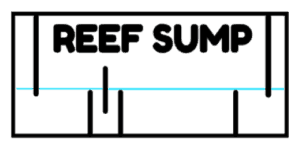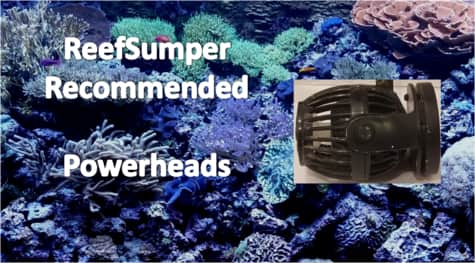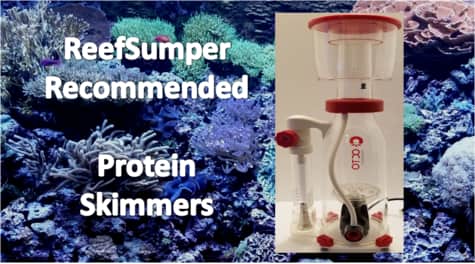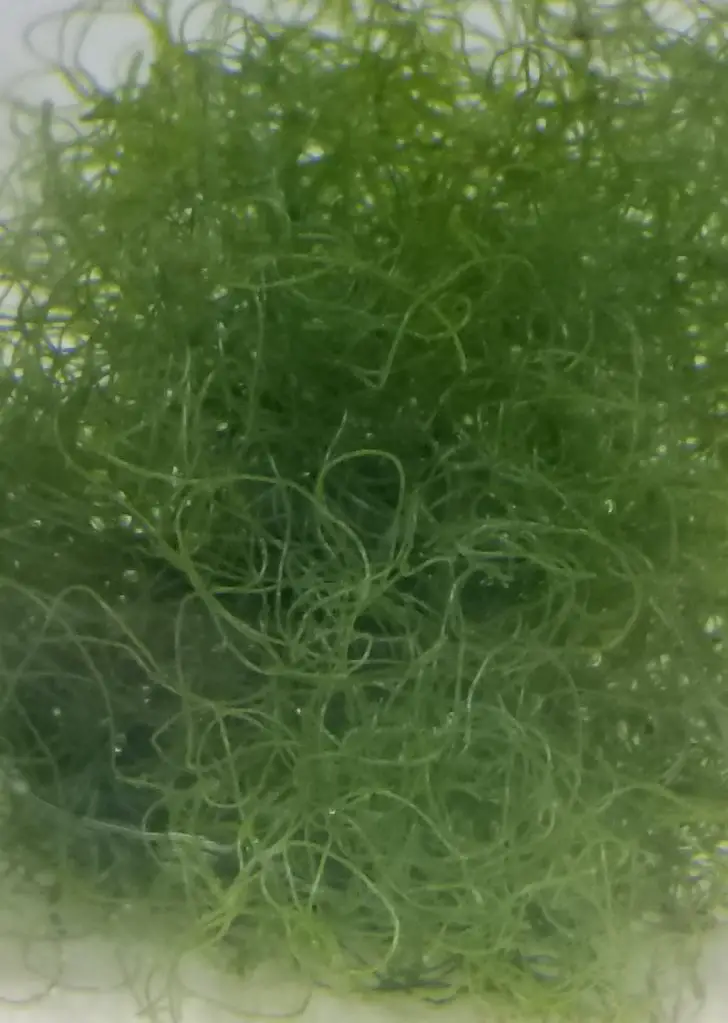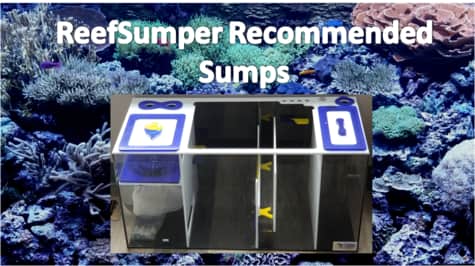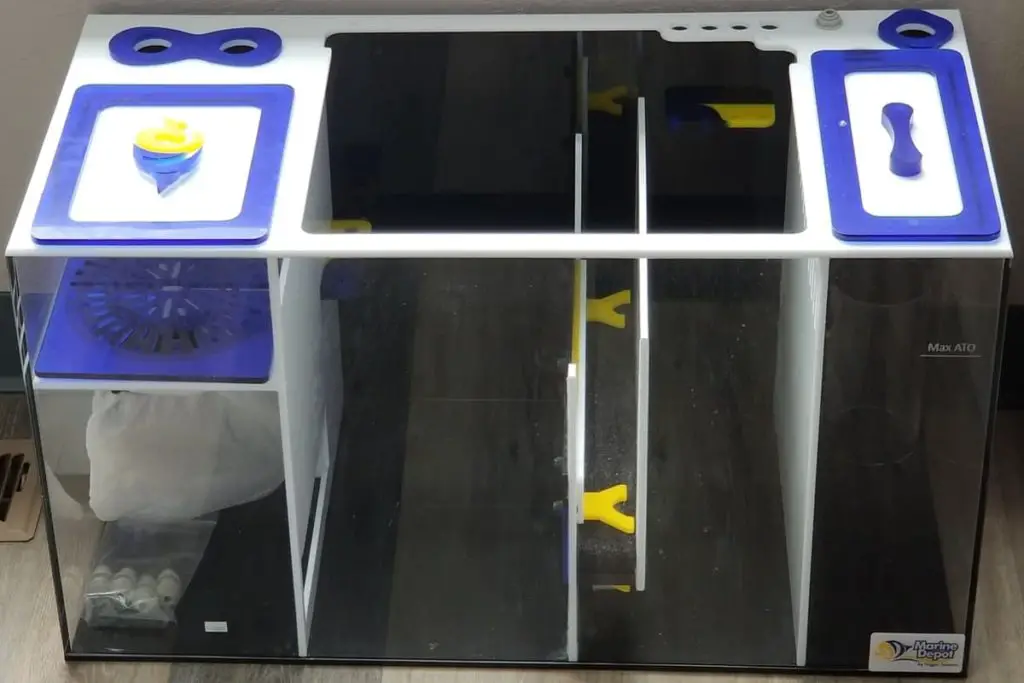
When I first started with my original reef tank many moons ago I did not have a sump. My reef tank was rather successful as I kept a good variety of fish, soft corals, and beginner LPS (Large Polyp Stony) corals. As I got more serious into the hobby I would eventually move to a bigger tank with a sump and honestly wouldn’t consider a future tank without a sump unless it is a nano build or smaller tank that can be stabilized through water changes.
So, are aquarium sumps necessary for a saltwater fish tank? The answer is no, sumps are not an absolute necessity for a saltwater fish tank. There are many aquariums that are very beautiful and thriving without sumps integrated into their reef aquarium setup.
I love reading through the various online forums for saltwater aquariums. It’s great reading about other aquariums and how different people approach the various aspects of reef keeping and their aquariums. When reading through posts I ran across a term for thriving reef tanks without sumps, that term is “The Sumpless Wonder.” The fact that there is a term for this type of reefing just solidifies it is possible to have a great reef tank without a sump. Read on to learn more about how it is possible to have a healthy and thriving reef tank without a sump.
The Essential Consistent Water Change
Regular water changes are an important factor in maintaining a healthy reef tank without a sump. Water changes benefit the tank in two important ways, removing waste/nutrients and replenishing trace elements. As the inhabitants of your tank create organic waste, the waste accumulates over time facilitating the need for an export method. A water change is an excellent method as organic waste is directly removed from the aquarium. Your tank inhabitants will also use up trace elements in the water. When these trace elements are used up life in the tank may not be as healthy as it could be and you may see things like corals pulling back and not opening.
The frequency and amount of water changes will vary from tank to tank depending on factors like bioload, other equipment, other types of filtration (mechanical and chemical). A good rule of thumb is to do a 20% weekly water change and experiment with the amount and frequency to find a good schedule for your reef tank. I currently change only 10 gallons a week on my 75-gallon medium-heavily stocked reef tank with the occasional bi-weekly water change when life gets busy. My tank does have a skimmer, refugium, Chaeto, carbon reactor, and filter socks. I initially started with 20 gallons weekly and dialed down to 10 gallons after experimenting. In general, a sumpless tank has more opportunity to accumulate organic waste and may facilitate the need for more water changes than a similar tank with a sump.
When it comes to doing a water change I like to brew my batch the night before with a tub, powerhead, and heater. Changing the water in the tank is changing the environment and it is important to do this quickly with the least amount of impact on your tank’s inhabitants. For the new water try to closely match the tank’s salinity, temperature, and minimize the amount of time the water level is lowered and the equipment is off.
Flow
Flow inside of the reef tank is another consideration with a sumpless tank. As organic waste is produced it may settle into spots in the tank where flow doesn’t exist. When this happens the organic waste is allowed to collect and continue its breakdown process. When this goes unchecked it can raise harmful levels of nitrate and phosphate in the tank stressing out fish and corals potentially leading to a catastrophic die-off. Having additional powerheads and flow in the tank can help combat this. You can also move your powerheads around the rock work during water changes to dust off the waste and remove more of it during the water change. I’ve found using a turkey baster to blast live rock also does a great job in hard-to-reach places. Turkey basters can play a dual role as they can be used to spot feed coral and fish as needed. In general, a sumpless aquarium will benefit with high flow in the display tank than a similar tank with a sump.
Protein Skimmers
Protein skimmers are an amazing piece of equipment for the reef aquarist. Protein skimmers work by mixing air and water to create microbubbles. These microbubbles create a surface on which organic waste can bond to. Once bonded to the surface area of these thousands of microbubbles, the bubbles travel up the skimmer base into a collection cup. A high-performing well-tuned protein skimmer will directly remove lots of waste from the water column of a reef tank.
Protein skimmers have come a long way since I began reef-keeping years ago. My first skimmer was a hang-on-the-back Red Sea Prizm skimmer (similar to this one). Wow, this thing was a pain. I could occasionally get it to collect skimmate but constantly found myself adjusting it or having to clean it. The collection cup moved up and down with a rubber band and I dealt with this thing until the rubber band broke one day. There are many great options on the market today that are hang on the back and do an excellent job skimming. A protein skimmer will go a long way in finding success with a sumpless reef tank.
Media Reactors
Media reactors are tube or canister-like devices that can be filled with the media of your choice. Media reactors pull water from the tank through the tube and media accomplishing different tasks depending on the media. Some popular filter media types are gfo (granular ferric oxide), carbon, and bio pellets. GFO is typically used to strip phosphate from the aquarium. Carbon is used to strip impurities and toxins out of the water column and acts as a polisher by clearing up the water clarity. Bio pellets are used to promote healthy bacteria levels which lower nitrates in the system. There are many more filter media options and all tout their own benefits. I like to use media and media reactors when considering a specific problem my tank is facing such as algae, nitrate, or phosphate issues. As the issue pops up I think of media almost like a special forces team that I can deploy to restabilize my aquarium. I do like and recommend using carbon most of the time which helps keep the water nice and clear. Media reactors can be a helpful addition to a sumpless reef tank when used as needed.
Refugiums and Macro Algae
A refugium without a sump is an interesting innovation in reefing. There are many companies that offer hang on the back refugiums these days. Refugiums are basically a place separate from the tank that has tank water flowing through it providing a safe harbor for beneficial animals like copepods and beneficial macroalgae like Chaetomorpha (Chateo). Some of these sumpless refugiums are a good size and capable of holding a few gallons of water. When copepods have a safe place to live and reproduce, inevitably they will make their way into the display tank. Copepods can serve as a food source for fish and some corals. They also can serve as members of the cleanup crew living inside live rock and substrate consuming organic waste in unreachable locations. There are many options on the market to light these external refugiums as well. Lighting the refugium opens up the ability to grow macroalgae like Chaeto. Chaeto grows through photosynthesis from a light source and uses phosphate and nitrate as fertilizer taking it out of the water column. Having a refugium stuffed full of macroalgae and pods can go a long way in achieving a healthy and thriving reef tank in a sumpless setup.
Buy Chaeto from ReefSump Here
Closing Thoughts on Sumpless Wonder V.S. Reef Sump
Overall there are many methods and equipment available that a person could definitely achieve success in a sumpless setup. Regular water changes, a protein skimmer, a thriving fuge, and a media reactor will most likely lead to success. With that said, I mentioned that my second tank is a sump set up and without question, any future build I do would definitely include a sump unless I was building a nano tank. My biggest reason for this is actually aesthetics. I consider the display tank as a canvas that can be artistically painted with corals, fish, aquascapes, and other life-like crabs and shrimp. I simply only want the things I want in the tank and have the option to banish the equipment underneath the stand in the sump. Now don’t get me wrong, I do also love the various equipment and system intricacies that come with reef keeping, but I consider that secondary and a part to show off when in the right moments. After visitors have finished oohing and aahing the display tank, that’s when the stand doors come open and I can explain the flow of the water through the sump and what’s happening through each chamber and piece of equipment. Having the sump is also a great opportunity to explain engineering and biology concepts to my young kids and pique their interest in the hobby. In any case, those are a few of my sentimental thoughts on sump vs. sumpless aquarium, and here are some additional benefits of having a sump that comes to mind.
- It is typically better to have more volume of water in a reef aquarium. Higher volume of water extends your margin of error with water chemistry and other issues that can pop up with reef keeping. A sump’s capacity adds to the overall volume of the system.
- In addition to banishing equipment to the sump, there are just more options available to the hobbyist for other equipment by having the additional space and mounting options with a sump.
- Noise can be better contained. If your sump is below the tank and enclosed by the stand it can go a long way in noise reduction.
- Surface skimming can be a problem in sumpless tanks with organic matter pooling like scum at the top of the tank. As water is pulled into the overflow it is constantly surface skimming the waste into the sump where it can be filtered out.
Related Questions
Can a canister filter be used on a reef tank? Yes, a canister filter can be used on a reef tank. Canister filters can be very efficient at collecting organic waste in a reef tank. The drawbacks to using a canister filter are that if left un-cleaned for a relatively short time, organic waste in the canister filter continues to decompose and can increase undesirable waste levels in the tank fast. In general, there are more efficient and easier options for filtration for a reef aquarium setup.
Can you place macroalgae like Chaeto in the display tank? Yes, macroalgae can be placed anywhere where it will have the right environment to survive. Macroalgae will want access to light, the right amount of flow for the species, and protection from other inhabitants that may eat it. It can come down to preference, but macroalgae can be a beautiful addition to a reef tank if it is not allowed to take over.
